

 The Accurate Reloading Forums
The Accurate Reloading Forums  THE ACCURATE RELOADING.COM FORUMS
THE ACCURATE RELOADING.COM FORUMS  Hunting
Hunting  African Big Game Hunting
African Big Game Hunting  Rain in the Kalahari
Rain in the KalahariGo  | New  | Find  | Notify  | Tools  | Reply  |  |
| One of Us |
I've just returned from Namibia a few hours ago so my brain is still fuzzy. Namibia's Kalahari is experiencing heavy rains and the areas that are normally dry and brown are covered with high grass and the trees are green, in many cases blossoming with beautiful flowers. This makes spotting game much more of a challenge and retrieving downed game can be more difficult because the ground can turn into tyre-sucking morass. Be aware of off-track travel, even with 4-wheel drive. Travelling on "C" and "D" roads can also be challenging because of high water and mud. Drive carefully. Here a pics taken just a few days ago. 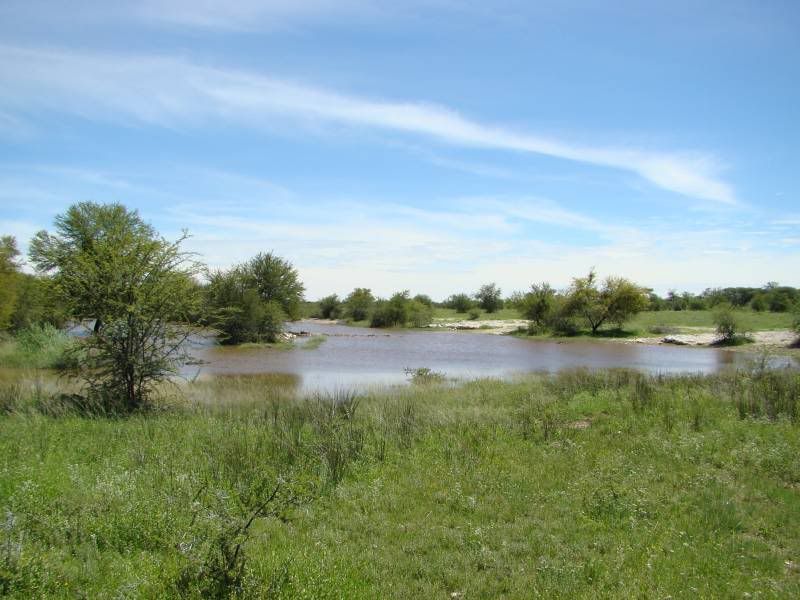 This pan is normally dry eleven and a half months of the year. 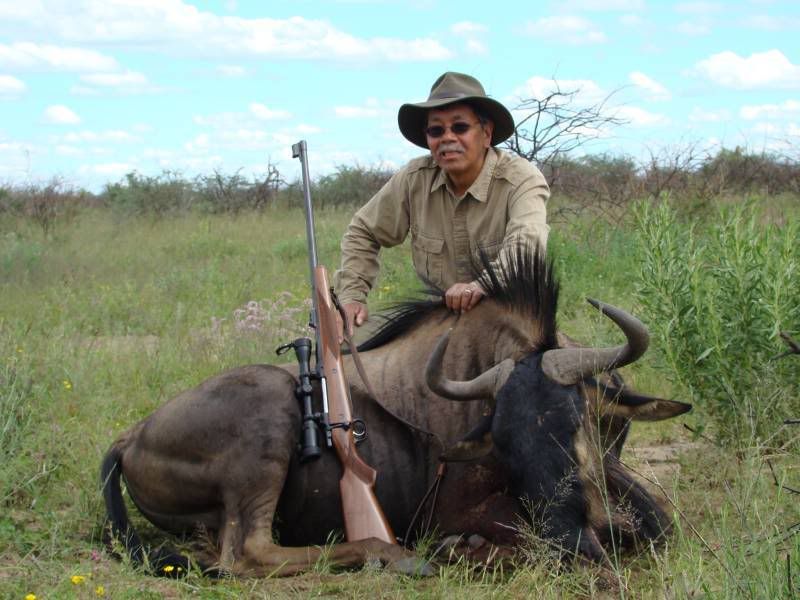 Me, with one of my blue wildebeest taken with a .375 H&H at about 80 yards. I also took a Burchell Zebra and another wildebeest. The rest of my hunting party took a kudu, an oryx, 2 warthogs, and a springbok. I will post on Hunting Report later when I've fully rested, maybe a week or so. Namibiahunter  . | ||
|
| One of Us |
Neat to see all the green! Looks like you had a great hunt. ~Ann  | |||
|
| one of us |
A Zim PH told me it was the best rains they had seen in 10 years. Will look for your report. _______________________________  | |||
|
| one of us |
That's pretty interesting. Seems like two years ago they had the best rains in 5 50-100 yrs. Nice 'beaste When there is lead in the air, there is hope in my heart -- MWH ~1996 | |||
|
| one of us |
This comment came from Omay. I don't know about just how much rain they got but I do keep hearing about the good rains this year. Good to see it hit the Kalahari too. _______________________________  | |||
|
| one of us |
Last September I spent 5 weeks touring Namibia. Most of the region north of Windhoek - Tsumeb was going really dry period. If you drove the the roads in the evening you could see a hundred warthogs in a few hours. Warthogs and Kudu were very poor condition, I am sure some areas north of Windhoek experienced major die offs of Warthog and Kudu. It sure is nice to see the rains come back ! Does anybody know how much rain the got this spring? Robert Johnson | |||
|
| One of Us |
I spent a few days on the Namib Desert where it did not rain at all, then, a few days later I went to the Kalahari and it rained and rained. Where I hunted east of Okahandja, the area received 70 to 80 milliliters of rain in 2 days. During the morning roll call of the conservancy members there were I heard reports of 3 inches or more overnight. Some access roads were impassable. Here is pic of one of the hunting vehicles getting stuck in the mud during our first night of hunting.  Below are what it looks like to the hunter of oryxes and red hartebeests this rainy season. 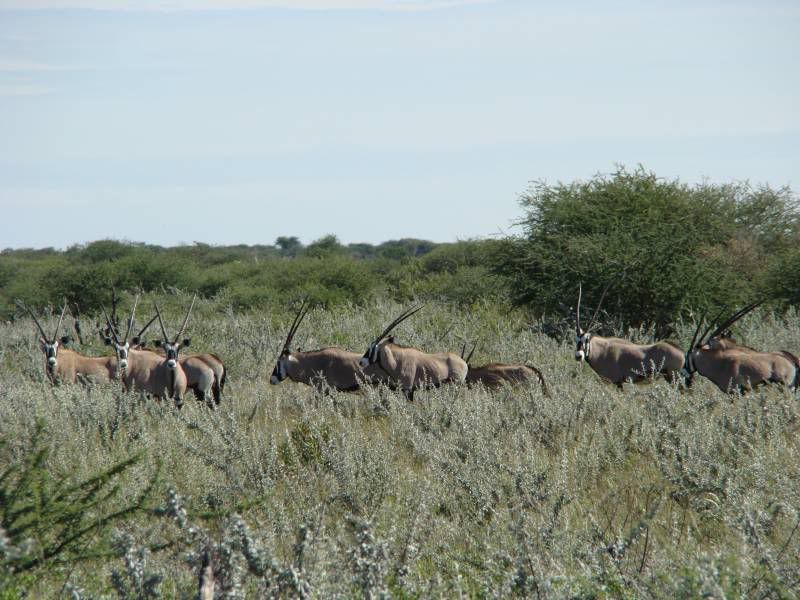 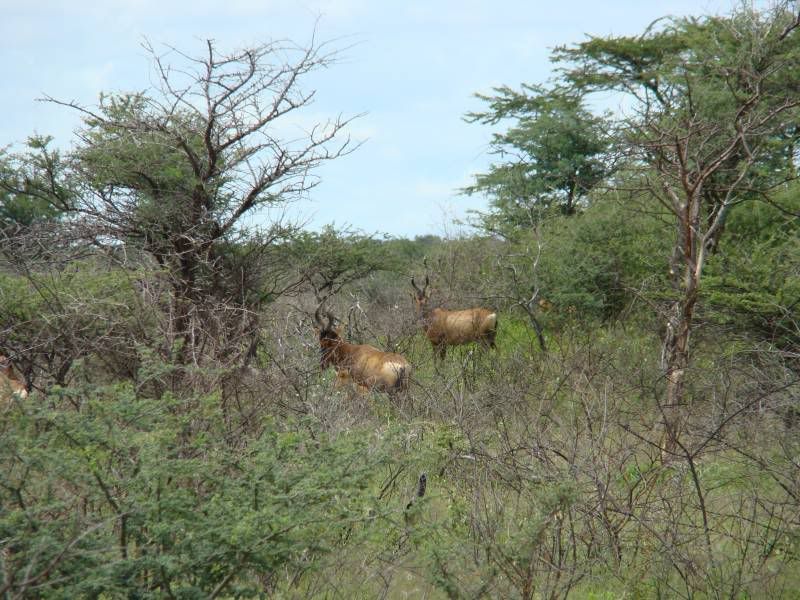 The rains are good, however. The rains will not last forever and the animals will grow big and strong. I wish you all good hunting this year. Namibiahunter  . | |||
|
| One of Us |
So I assume this is good all around for the animals? They will be stronger and healthier with more young surviving? I also assume hunting might be a bit tougher with the cover leading to even more animals making it? Would you say this will help numbers and quality just short term or into next year and longer? | |||
|
| One of Us |
Exactly the question I was going to ask!! ______________________ DRSS ______________________ Hunt Reports 2015 His & Her Leopards with Derek Littleton of Luwire Safaris - http://forums.accuratereloadin...6321043/m/2971090112 2015 Trophy Bull Elephant with CMS http://forums.accuratereloadin...6321043/m/1651069012 DIY Brooks Range Sheep Hunt 2013 - http://forums.accuratereloadin...901038191#9901038191 Zambia June/July 2012 with Andrew Baldry - Royal Kafue http://forums.accuratereloadin...6321043/m/7971064771 Zambia Sept 2010- Muchinga Safaris http://forums.accuratereloadin...6321043/m/4211096141 Namibia Sept 2010 - ARUB Safaris http://forums.accuratereloadin...6321043/m/6781076141 | |||
|
| one of us |
/ | |||
|
| One of Us |
Anyone else note the horn length on the oryx at the far right of the picture? Thanks for the photos. Sam | |||
|
| One of Us |
I have a web site that I check every day for Windhoek's weather and it's showing rain there for five out of the next seven days. My PH says they have had a really good rainy season and I won't believe how green his place is. Was there last year and everthing was really dry, dusty and brown. I really hope it lets up in the near future as I will be arriving there on April 30 to start my Safari. Larry Sellers SCI Life Member | |||
|
| One of Us |
Hey Larry I'd be interested in that website if you care to share it. | |||
|
| One of Us |
GB22 - This is the link, you can customize it for various cities as you wish. Kinda cool to keep up with what's happening in the area you are going to. www.timeanddate.com/worldclock Larry Sellers SCI Life Member
| |||
|
| One of Us |
Thanks! | |||
|
| one of us |
I heard similar reports from my outfitter and his contacts in Namibia he books for. Graybird "Make no mistake, it's not revenge he's after ... it's the reckoning." | |||
|
| One of Us |
This year the kudu and warthog population seems healthy and good numbers. The only thing limiting kudu hunting in Kalahari is the dense foliage as a result of the heavy rains. Last year there was an outbreak of rabies among the kudu and it thinned out the herds somewhat but they have rebounded very well for this year. Here's a pic of John McKenna with his kudu taken March 15, 2008. The left horntip was broken but the animal was heavy. 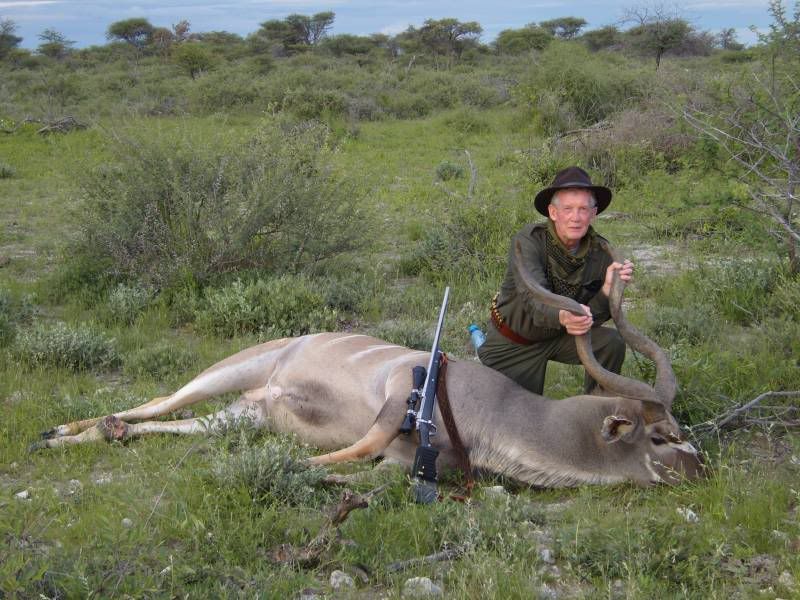 Warthogs were in abundance and we took 2 but could have taken more. Namibiahunter  . | |||
|
| one of us |
Looks like you had a good time, and what incredible pictures of incredible weather. FWIW, warthog populations are very sensitive to heavy rains and if the area is anything like the ones I've hunted, these heavy rains will probably mean a shortage of good warthogs over the next 2 or 3 years..... so you got your timing absolutely spot on. What happes when the heavy rains come is that the females get the youngsters into the holes and then back themselves in at the top. As the rains get heavier, the holes flood and the youngsters try to push their way out to safety and the female digs her heels in and blocks them, so a large percentage of the young ones drown. - Then for a couple of years there's a drop in the population......... | |||
|
| one of us |
NamibianHunter, Looks like the kudu bull had a very big injury on his back leg. Was that part of the reason this kudu was taken ? Doesnt look like he would have made it much longer with a wound like that especially when it goes dry again. So much folaige around he didnt need to travel very far for food. And he looks to be in pristine condition. Frederik Cocquyt I always try to use enough gun but then sometimes a brainshot works just as good. | |||
|
| One of Us |
We spotted the bull and four females from about 750 yards. The PH saw the broken horn and asked John if he still wanted the bull. John said that he did. We could see no other injury on the bull from that distance and it seemed to have no trouble moving as it grazed. We began our stalk with a good wind - the tracker leading, then the PH, then John the shooter, then me with a camera. The final 50 yards getting to within 120 yards of the bull were on hands and knees or duck-waddling. One shot with the .338 WinMag, 225-grain SP bullet hitting the chest and exiting dropped the kudu almost on the spot. It was only upon coming to the downed animal that we saw the massive injury to its leg. The horns were also well rubbed down indicating that the bull had a lot of years behind him and was about ready to be replaced by a younger stud. John was well satisfied with this kudu and will have him shoulder-mounted for his wall. Namibiahunter  . | |||
|
| one of us |
Good rains in other parts of Namibia too. One PH I know said that the areas he hunts in the north were flooded and he is expecting swampy conditions as the main flood waters typically arrive in April, and that he is expecting a "great adventure" on his first hunt there in June. This is from an email today from a PH who hunts Bushmanland: "We came back yesterday from Bushmanland. The area received a lot of rain, our camp at stages looked like being situated on a remote island in the bush. There are now ducks, geese and especially frogs all over. My last hunter wanted to get a roan and a wildebeest, but only managed to get the blue wildebeest. Long marches in the wet grass softened up his feet completely, the result were blisters all over and unfortunately he could not prioduce enough stamina to keep up on the roan track." | |||
|
| one of us |
I wonder what all the raid does to the snakes. Would they concentrate on the higher land or get up in bushes? ALLEN W. JOHNSON - DRSS Into my heart on air that kills From yon far country blows: What are those blue remembered hills, What spires, what farms are those? That is the land of lost content, I see it shining plain, The happy highways where I went And cannot come again. A. E. Housman | |||
|
| One of Us |
FWIW, I didn't see a single snake this trip, only the tracks of a puff adder as it made its way across a sandy dry stream bed and where it had rested its bulky body during the night. On the other hand, my hunting buddy who was most concerned about snakes prior to coming to Africa, was the only one who encountered one this trip. He stepped on the tail of a 6-foot python and pissed it off. It came at him with a mouthful of teeth and made him have to jump. We all got a good laugh at that. Namibiahunter  . | |||
|
| Powered by Social Strata |
| Please Wait. Your request is being processed... |
|

Visit our on-line store for AR Memorabilia

